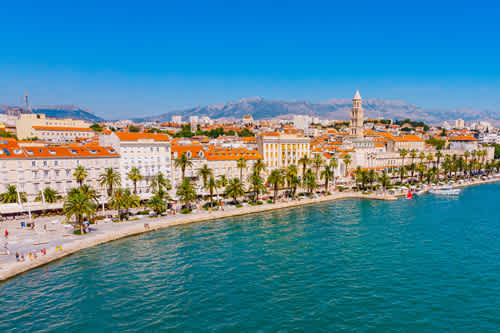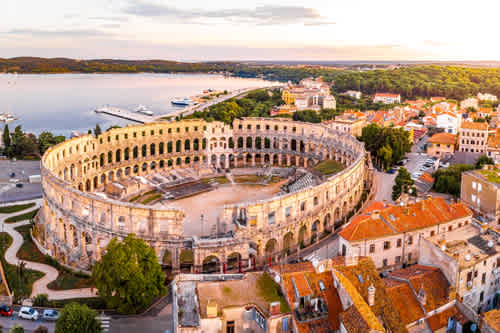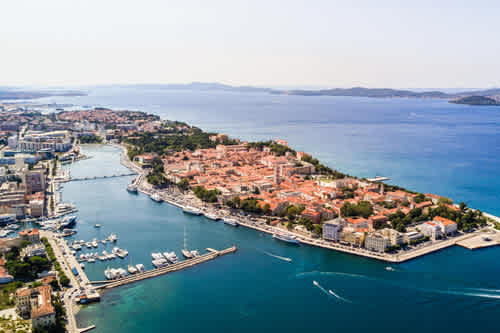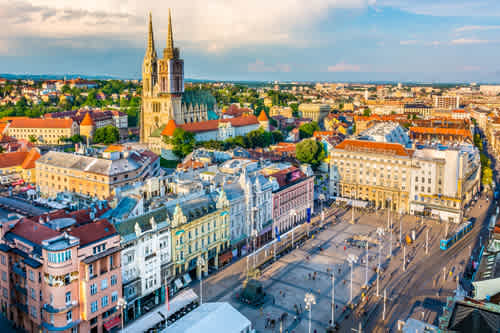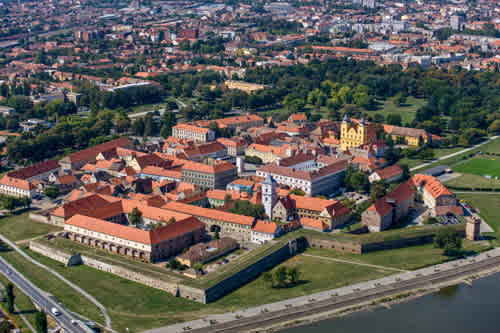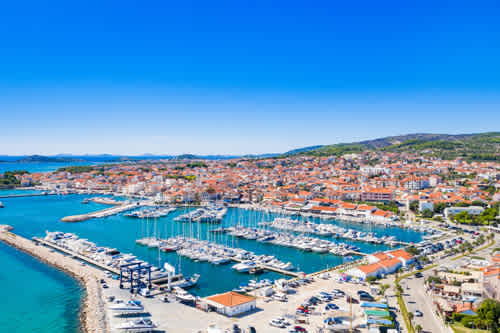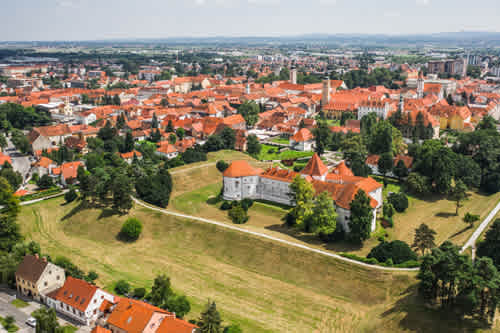About Croatia
Known for its white beaches, clear turquoise water, and rich history, visit Croatia for the trip of a lifetime.
Croatia’s unusual crescent-shape is the first indication of its unique character – a country which highlights both the Central European and Mediterranean characteristics of its location. It is geographically diverse, encompassing a beautiful Adriatic coastline lined with beautiful beaches, plateaus, and low mountains, a variety of islands, and flat plains adjacent to its northern border with Hungary. Along with its natural beauty, the country is packed with culture, history, and allure.
Honestly, while Zagreb, the capital of Croatia, is sometimes overlooked by travelers, it is a charming modern metropolis bursting with history, culture, cuisine, and traditional hospitality. Known as an old city with a young soul, Zagreb features the Upper Town, with its cobblestone streets and gas lights, dating back a thousand years. The imposing Presidential Palace, iconic St. Mark’s Church, and medieval Croatian Parliament building are some of the area’s highlights. The charming 19th century Lower Town is renowned for its shops, restaurants, theatres, lush gardens, and cafes. The Zagreb Cathedral is one of the city’s landmarks, and the Dolac Market, Zagreb’s main open-air market, is a colorful and lively attraction.
Also known as a city of museums, Zagreb is home to a wide assortment ranging from the classic - contemporary and Old Masters art, archeology, and history - to the out-of-the-box, such as the Museum of Broken Relationships and the Museum of Torture.
The city of Dubrovnik, described as “the pearl of the Adriatic,” is a popular destination located on the Adriatic Sea. The Old Town is famous for its well-preserved city walls, the Stradun – its main thoroughfare –with its charming cafes and shops, the 14th century Franciscan Monastery, and its cable cars up to Mount Srd which offers outstanding views of the city. Dubrovnik’s wide assortment of museums includes the Homeland War Museum, the Love Stories Museum, and the Cultural History Museum. There are boats running regularly from Dubrovnik to some of its nearby islands, such as Lokrum, with its beautiful botanical gardens and beaches.
What about the scenic, pebbled beaches with transparent, crystal waters that Croatia is famous for? Let’s start with Zlatni Rat, known as the Golden Cape and one of Europe’s top beaches. Located in the region of Dalmatia, Zlatni Rat is a spit of land with beautiful beaches on either side whose landform changes with the tide, wind, and current. The 60 km Makarska Riviera is another popular coastal destination featuring spectacular beaches, landscapes, and bays.
The region of the Istrian peninsula, with its heavy Italian influence, is one of Croatia’s most popular destinations offering natural beauty both along the coast and inland. Umag and Porec are among the top ranked resorts. Rovinj is a local cobblestoned fishing port with old-world charm and celebrated sunsets, and its archipelago of 14 islands is located off its coast. The seafront city of Pula, with its famous harbor and Roman ruins, is the largest in the area.
Croatia is home to eight stunning national parks – from serene groups of islands to famous lakes and waterfalls to rugged landscapes. The Plitvice Lakes National Park, with its 16 lakes and diverse wildlife, is the most visited national park. Connected by waterfalls and set in dense forests, Plitvice is a truly spectacular destination all year round –lush greenery in the summer, colorful foliage in the fall, and a snowy wonderland in the winter.
The Brijuni National Park, consisting of 14 islands located off the coast of Istria and easily accessible from the mainland, offers untouched natural beauty and a wide variety of activities. Paklenica National Park in Dalmatia, known for its dramatic gorges, rock formations, black pine forests, and unusual wildlife, is a top spot for the adventurous- cyclists, climbers, and hikers – as well as for those looking for less daring trails. Risnjak National Park is a forested, mountainous area with outstanding hiking treks.
Split, Croatia’s second largest city, combines a variety of beaches and vibrant nightlife with ancient sites. Znjan is Split’s largest beach, and Bene beach, located in the woods, is largely shaded. Diocletian’s Palace, a must-see in Split, is a well preserved, luxurious fortress from the time of the Roman Empire with walls, towers, statutes, and gates. Riva is a promenade along the sea which offers entertainment, cafes, and restaurants in a distinctive Mediterranean atmosphere, and the Piazza – the city market – is a vibrant hub for local specialties.
Ready to experience the diverse natural beauty and rich heritage of Croatia? RoutePerfect is your address for planning, organizing, and booking your personalized dream trip. Unlike any other company, Routeperfect offers its exclusive popular itineraries written by tourism professionals and experienced travelers to jumpstart your planning, helping you to customize your travel and book your accommodations so that you can experience the country YOUR way.
Popular Itineraries
Traveled by thousands
Regions in Croatia
Attractions in Croatia
- St. Lucy's Church, Baska
- Historic Center, Baska
- Blaca Monastery, Bol
- Dominican Monastery, Bol
- Zlatni Rat Beach, Bol
- Historic Center, Bol
- Cavtat Cemetery
- St. Nicholas Church, Cavtat
- Church of Our Lady of the Snow, Cavtat
- Historic Center, Cavtat
- Historic Center, Crikvenica
- War Photo Limited, Dubrovnik
- Dubrovnik Synagogue
- St. Blaise's Church, Dubrovnik


